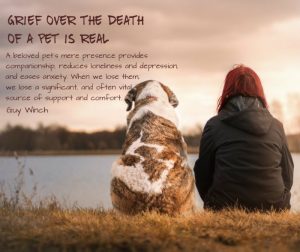End-of-life care options represent a crucial intersection of medical, ethical, and personal considerations. Navigating this complex landscape requires understanding the various approaches available, from palliative care and hospice to advance directives and pain management. This guide explores the multifaceted aspects of end-of-life care, providing insights into legal frameworks, emotional support, and practical planning strategies to ensure a dignified and peaceful transition.
The choices individuals and families make during this challenging time significantly impact the quality of life for the patient and the grieving process for loved ones. A well-informed approach, grounded in understanding and compassion, can alleviate suffering and promote a sense of peace and closure.
Defining End-of-Life Care: End-of-life Care Options
End-of-life care encompasses the medical, emotional, and spiritual support provided to individuals facing a life-limiting illness. It aims to improve the quality of life for both the patient and their family during this challenging time, focusing on comfort, pain management, and emotional well-being rather than curative treatments. The scope of end-of-life care is broad, spanning various stages of illness and employing diverse approaches tailored to individual needs and preferences.End-of-life care is not solely about the final moments of life; it begins well before the terminal phase.
It acknowledges that the dying process is a journey, and supportive care is needed throughout. This can involve managing symptoms, providing emotional and spiritual support, addressing practical concerns, and facilitating communication between patients, families, and healthcare providers. Different approaches are adopted depending on the patient’s prognosis, preferences, and available resources.
Models of End-of-Life Care Delivery
Several models exist for delivering end-of-life care, each with its unique characteristics and focus. These models often overlap and are not mutually exclusive. For instance, palliative care can be provided in various settings, including hospitals, nursing homes, and even at home, while hospice care is typically provided at home or in dedicated hospice facilities. The choice of model depends on individual needs and circumstances.
One common model is the integrated approach, which combines aspects of palliative care and hospice care to provide comprehensive support throughout the illness trajectory. Another model emphasizes community-based care, involving a network of healthcare professionals, volunteers, and family members who work together to provide holistic support.
Cultural and Religious Influences on End-of-Life Care Choices, End-of-life care options
Cultural and religious beliefs significantly influence end-of-life care decisions. For example, some cultures emphasize family involvement in caregiving and decision-making, while others prioritize individual autonomy. Religious beliefs can shape attitudes towards life-sustaining treatments, pain management, and the acceptance of death. In some faiths, specific rituals and practices are observed during the dying process and after death. Understanding and respecting these diverse perspectives is crucial for providing culturally sensitive and ethically appropriate care.
For example, in some cultures, there is a strong preference for family members to be present during the final moments, while in others, the dying person may prefer solitude. Similarly, beliefs about the afterlife can influence decisions about life-sustaining treatment.
Comparison of Palliative Care and Hospice Care
The following table compares and contrasts palliative care and hospice care, two prominent models of end-of-life care:
| Feature | Palliative Care | Hospice Care |
|---|---|---|
| Goal | Improve quality of life for patients with serious illnesses, regardless of prognosis. | Provide comfort and support during the final stages of a terminal illness. |
| Prognosis | Not limited to terminal illnesses; can be provided at any stage of a serious illness. | Limited to patients with a life expectancy of six months or less. |
| Setting | Can be provided in various settings, including hospitals, nursing homes, and at home. | Typically provided at home or in dedicated hospice facilities. |
| Treatment Focus | Symptom management, emotional support, and coordination of care. Curative treatments may continue alongside palliative care. | Symptom management, pain relief, emotional and spiritual support; curative treatments are generally discontinued. |
Ultimately, understanding end-of-life care options empowers individuals to make informed decisions aligned with their values and preferences. By engaging in open communication with healthcare providers and loved ones, and by proactively planning for this inevitable stage of life, we can foster a more compassionate and supportive environment for those nearing the end of their journey. This journey, though challenging, offers an opportunity for reflection, reconciliation, and the celebration of a life lived.
The resources and information provided here serve as a starting point for this important conversation.
Answers to Common Questions
What is the difference between palliative care and hospice care?
Palliative care focuses on relieving symptoms and improving quality of life for patients with serious illnesses at any stage, while hospice care provides specialized care for individuals with a life expectancy of six months or less.
Who should I involve in my end-of-life planning?
Involve family members, close friends, your doctor, and potentially a legal professional to ensure your wishes are understood and documented properly.
What are common misconceptions about death and dying?
Common misconceptions include the belief that pain is always inevitable and uncontrollable, or that discussing death is taboo. Modern medicine offers effective pain management, and open communication can bring comfort and peace.
How can I cope with the emotional challenges of end-of-life care?
Seek support from family, friends, support groups, grief counselors, or spiritual advisors. Allow yourself to grieve and process your emotions.






